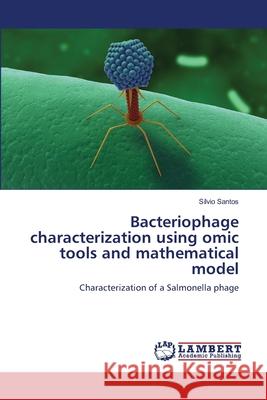Bacteriophage characterization using omic tools and mathematical model » książka
Bacteriophage characterization using omic tools and mathematical model
ISBN-13: 9783659505478 / Angielski / Miękka / 2014 / 220 str.
The increasing resistance of pathogenic bacteria to antibiotics in recent years has become a major problem in controlling infections in animals and humans. Salmonella enterica, which causes human food poisoning worldwide, is one of the most problematic bacteria with significant incidence in poultry. The development of alternatives to antibiotics has led to the resurgence of interest in (bacterio)phages, discovered before the antibiotics but which have succumbed to the efficiency of the later. In this book the biological, genomic and proteomic characterization of a broad-host-range Salmonella bacteriophage (PVP-SE1) with high potential for therapy is described. This phage represents an added value as a biocontrol agent and as a diagnostic tool for the problematic pathogenic Salmonella. Also, a mathematic model that describes the complicate population dynamics of the phage-bacteria system was developed which can be used to predict the outcome of a therapeutic use for this phage and also the optimization of phage production. This characterization will be necessary and valuable in the development of a commercial product (therapeutic, diagnostic or other) based on this phage.
The increasing resistance of pathogenic bacteria to antibiotics in recent years has become a major problem in controlling infections in animals and humans. Salmonella enterica, which causes human food poisoning worldwide, is one of the most problematic bacteria with significant incidence in poultry. The development of alternatives to antibiotics has led to the resurgence of interest in (bacterio)phages, discovered before the antibiotics but which have succumbed to the efficiency of the later. In this book the biological, genomic and proteomic characterization of a broad-host-range Salmonella bacteriophage (PVP-SE1) with high potential for therapy is described. This phage represents an added value as a biocontrol agent and as a diagnostic tool for the problematic pathogenic Salmonella. Also, a mathematic model that describes the complicate population dynamics of the phage-bacteria system was developed which can be used to predict the outcome of a therapeutic use for this phage and also the optimization of phage production. This characterization will be necessary and valuable in the development of a commercial product (therapeutic, diagnostic or other) based on this phage.











